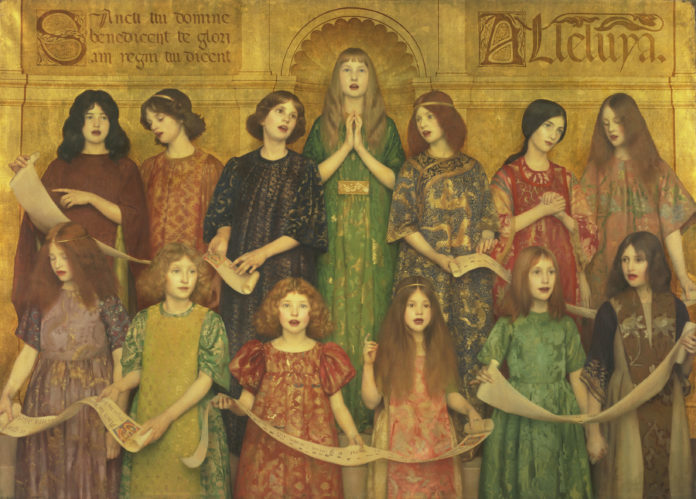“Dreams and Stories: Modern Pre-Raphaelite Visionaries” brings together paintings, works on paper, ceramics, and more created by British artists working during the late 19th and early 20th centuries to explore how this period was central to the development of modern art – in particular, to the evolution of Surrealism, the international movement that united the worlds of dream and fantasy with everyday life and flourished following the First World War.
Dreams and Stories: Modern Pre-Raphaelite Visionaries
On view through February 26, 2023
Watts Gallery
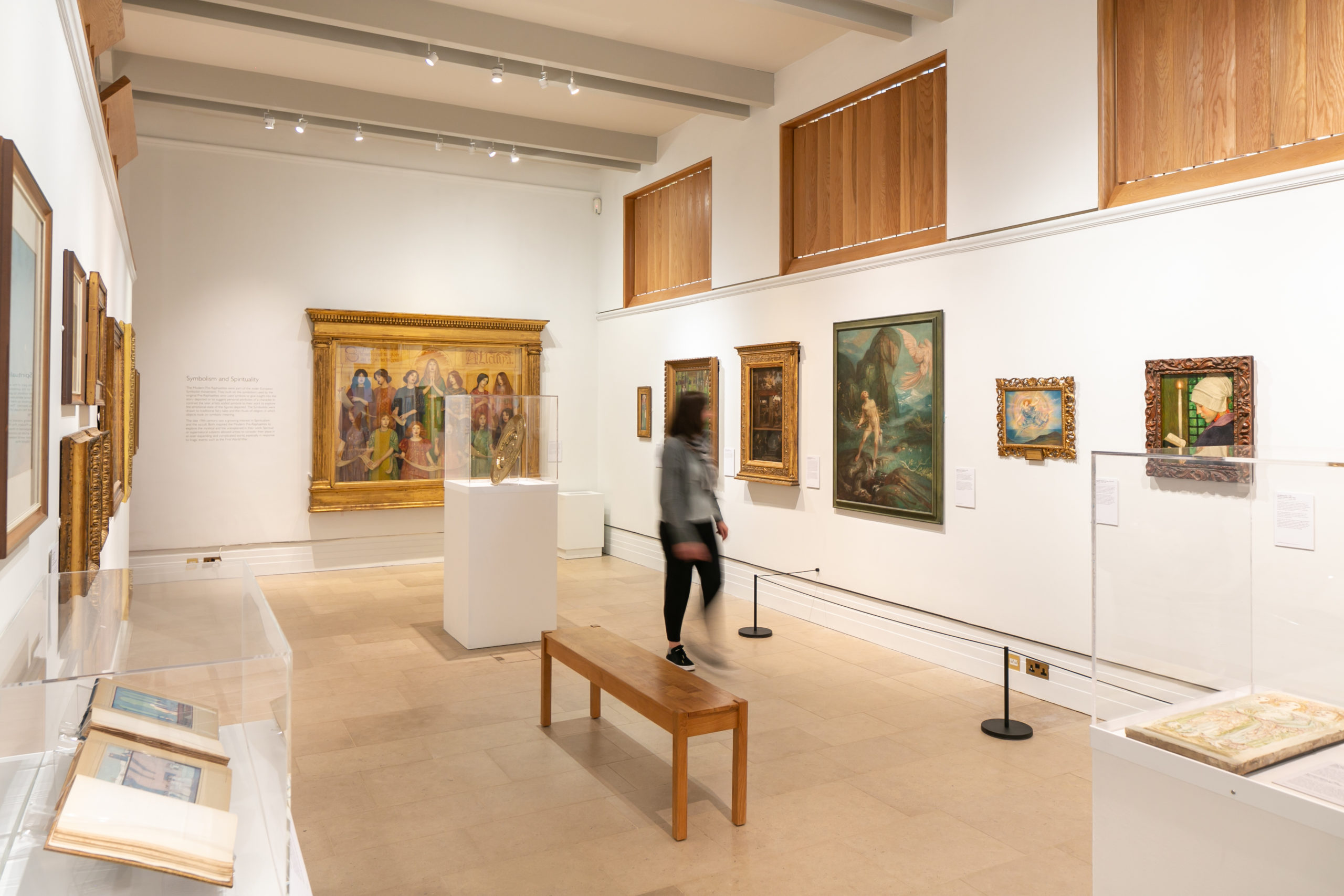
Featuring 38 paintings by artists including Frederick Cayley Robinson (1862-1927), Simeon Solomon (1840-1905), William Shackleton (1872-1933), Thomas Cooper Gotch (1854-1931), Evelyn De Morgan (1855-1919) and more, the exhibition will show how these artists continued to work in the Pre-Raphaelite ‘style’, and how they found in it a way of responding to new fields of study such as psychology which, for the first time, gave insights into dreams and the subconscious.
Although less familiar today than other artists from this era who sought to radically break ties with their predecessors, “Dreams and Stories” seeks to re-establish the role of these Modern Pre-Raphaelites in the evolution of modern art. Drawing from new research by Dr. Alice Eden, the exhibition will reveal how looking back allowed these artists to move forward and explore the modern world.
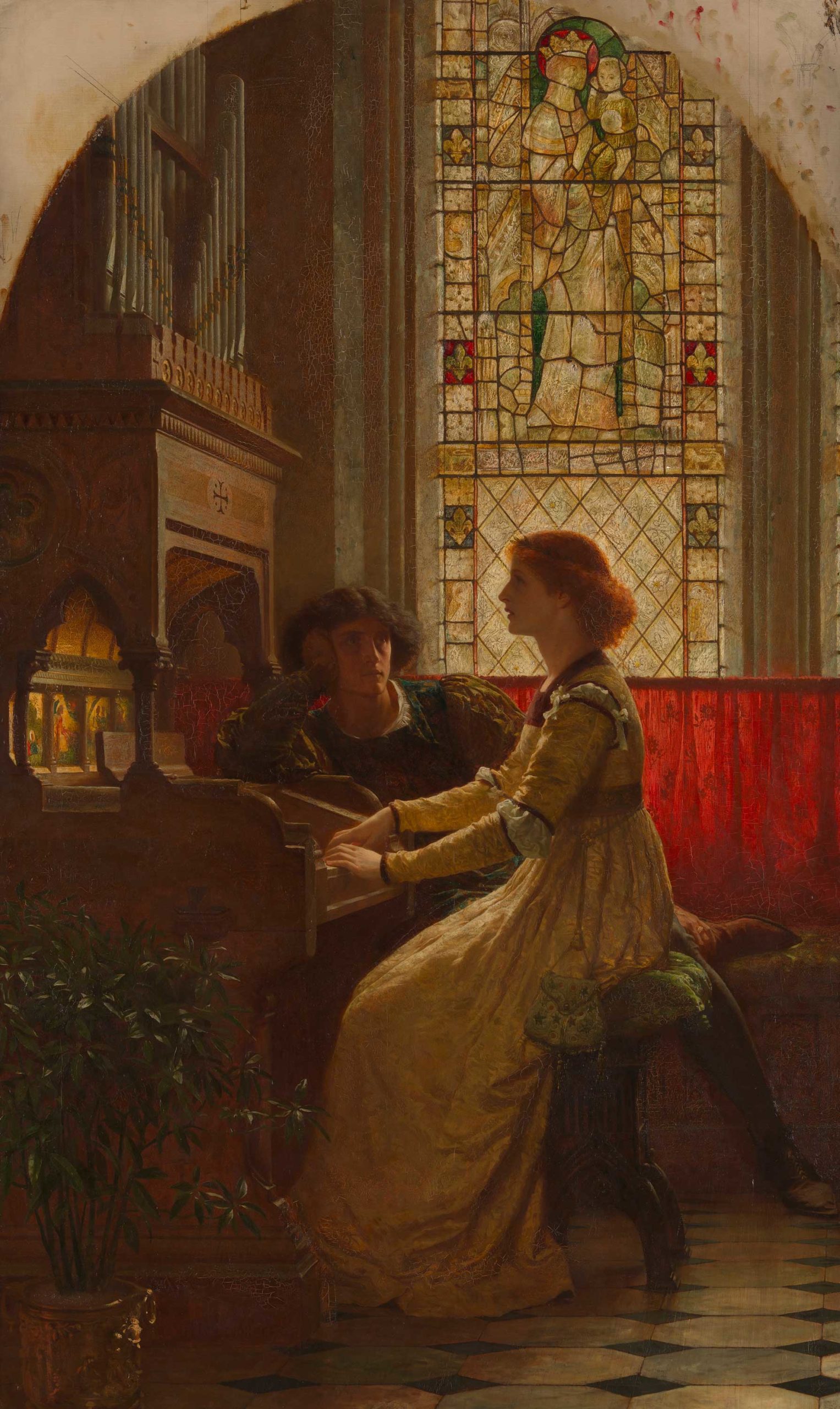
The Pre-Raphaelite movement began in 1848 when a group of seven young, male artists formed the Pre-Raphaelite Brotherhood to counter the formulaic and vapid art they saw around them. To bring true beauty back to British Art they looked to artists working before Raphael in the Middle Ages. The intensity of religious devotion and the pure, bright colors used by these Medieval artists led the Pre-Raphaelite Brotherhood to believe that the works these historical artists produced had greater integrity than the art of the 19th century.
The original group disbanded after a few years but over the next decade their style, sentiment, and subjects altered British Art and gained followers. This led to a second wave of artists who explored the ideas of color harmonies and the “art for art’s sake” in which art could just be beautiful without needing to teach the viewer anything.
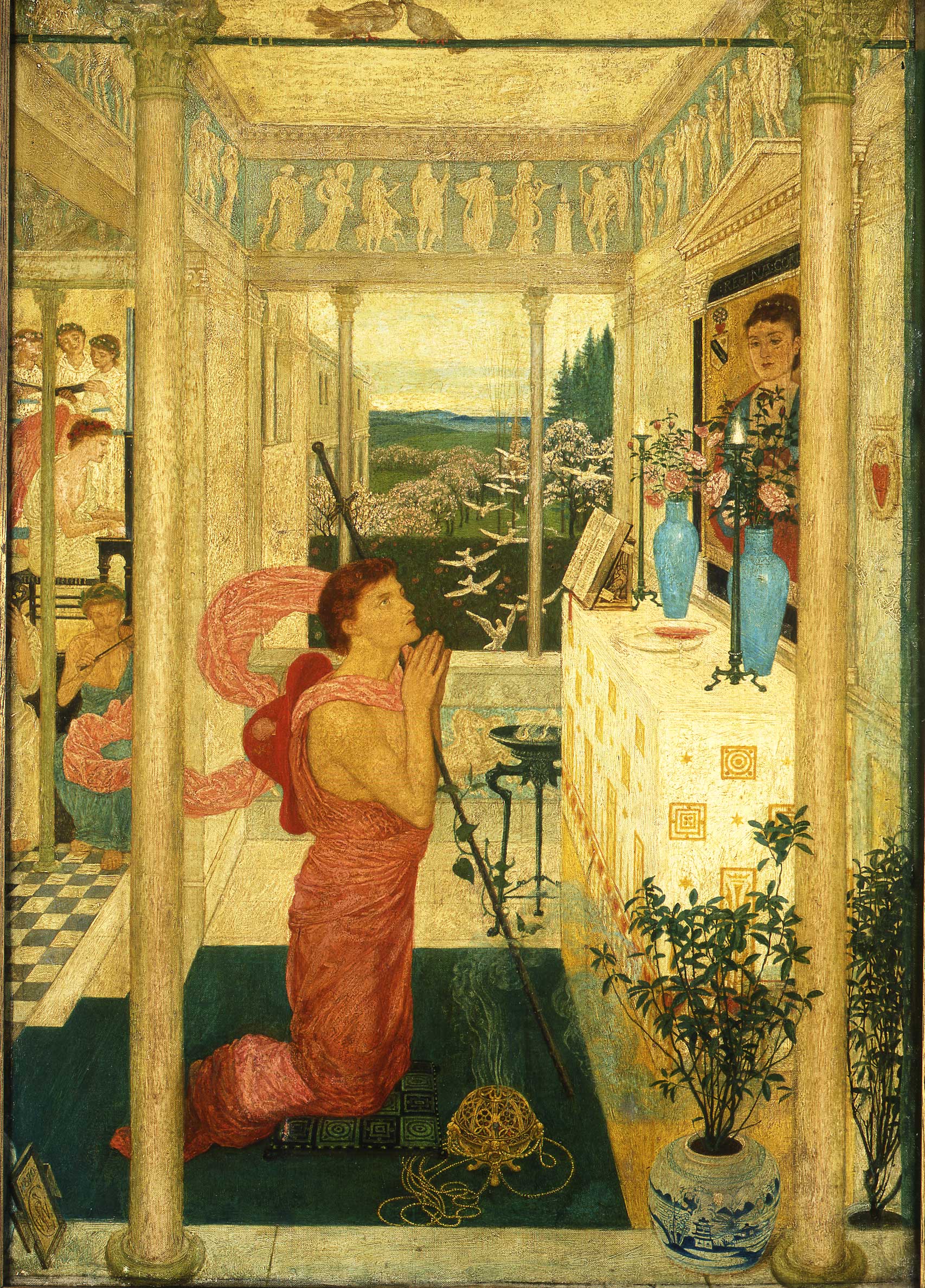
By the 1880s a new set of artists including Frederick Cayley Robinson, Evelyn de Morgan, and Marianne Stokes (1855-1927) continued the style, finding in it a way of responding to contemporary themes. In their paintings, the past and the modern world collide, with modern objects like airplanes, streetlamps, and sewing machines appearing within mystical landscapes or ecclesiastical interiors. Familiar fairy tale imagery is suffused with a sense of the surreal, reflecting new interests in psychology and Spiritualism. Saintly representations of women are reconsidered alongside the emergence of the modern woman and the Suffrage Movement.
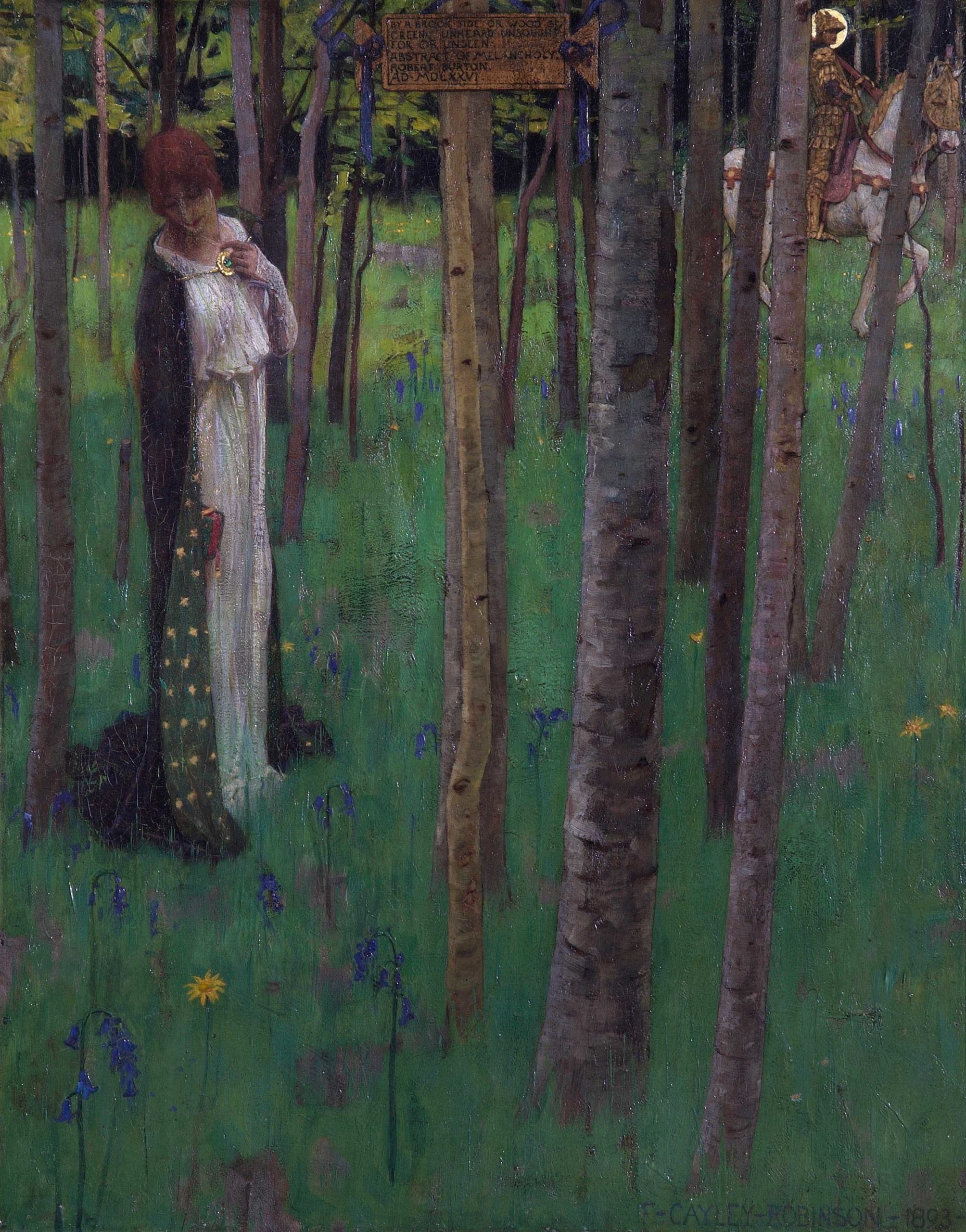
The exhibition includes works by both G F Watts (1817-1904) and Mary Watts (1849-1938). G F Watts moved towards Symbolism in his later works showing similar interests to the Modern Pre-Raphaelites including enthusiasm for the unexplained. In 1884 he joined Society for Psychical Research. Formed in 1882 to conduct scholarly research into human experiences that challenge science including hypnotism, séances, telepathy, and paranormal activity, the Society is still active today.
Mary’s work is represented by her snake pot which was one of the first designs she created for the Potters’ Arts Guild, staffed by the people of the local Compton community, to be sold in Liberty’s. Visitors can extend the exhibition beyond the gallery by exploring Mary’s ceiling tiles at Limnerslease celebrating world religions and nature, and her remarkable designs for the chapel which capture the essence of the Modern Pre-Raphaelites.
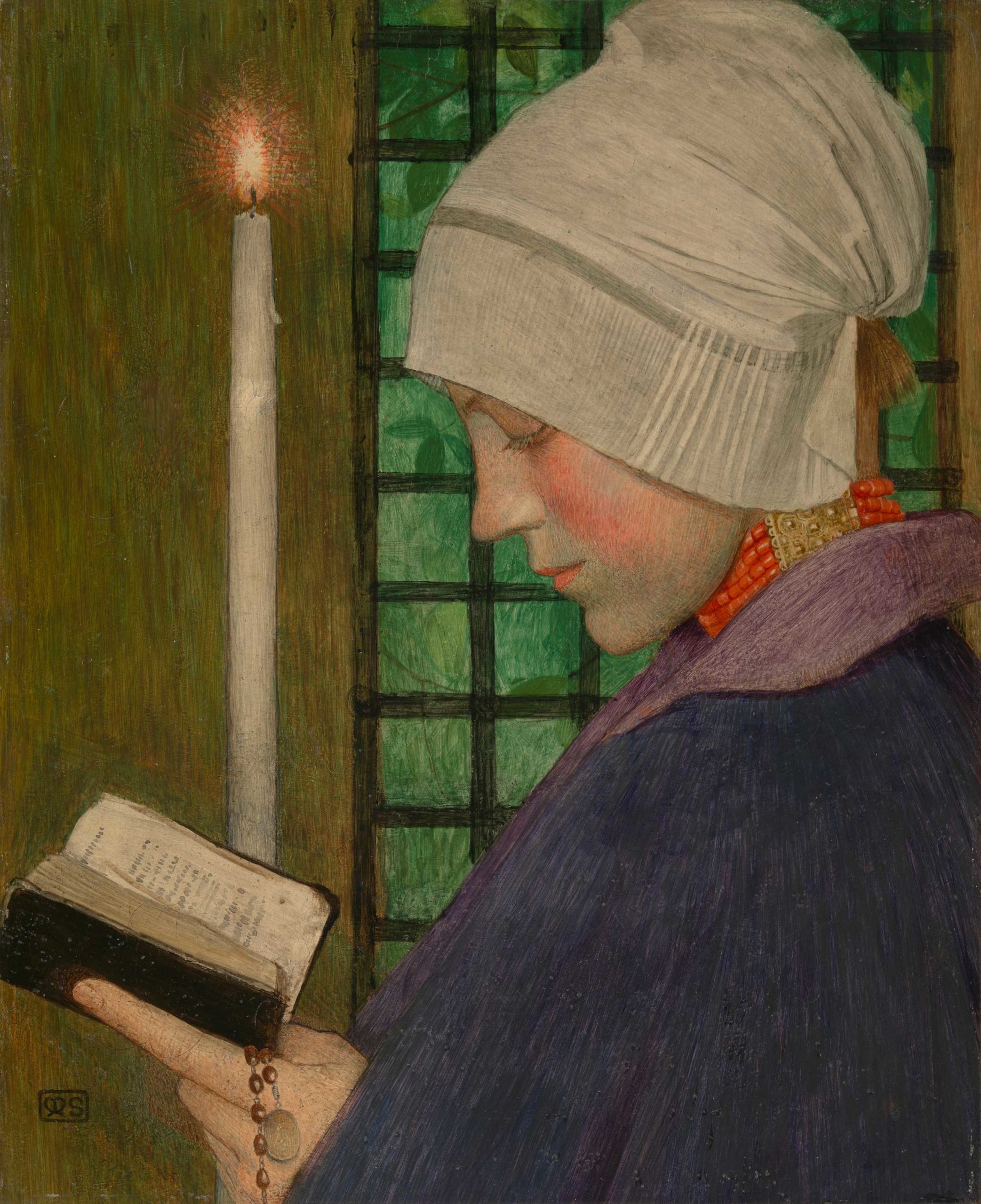
For details, please visit www.wattsgallery.org.uk/whats-on.
> Visit EricRhoads.com to learn about more opportunities for artists and art collectors, including retreats, international art trips, art conventions, and more.
> Sign up to receive Fine Art Today, our free weekly e-newsletter
> Subscribe to Fine Art Connoisseur magazine, so you never miss an issue

